Over the past few weeks we've been looking into and Watch What Every Frenchwoman Wants Onlineexploring the world of FreeSync 2. Now this isn't a new technology - it was announced at CES 2017 - but it's only now that we're starting to see the FreeSync 2 ecosystem expand with new display options. As HDR and wide-gamut monitors become more of a reality over the next year, there's no better time to discuss FreeSync 2 than now.
And there's a fair bit of confusion around what FreeSync 2 really is, how it functions, and how it differs from the original iteration of FreeSync.
This article will explore and explain FreeSync 2 as the technology currently stands, as it's a little different to the tech AMD announced more than a year ago. Our detailed impressions of using a FreeSync 2 monitor will come next week.
Here's a quick refresher on the original FreeSync. The name FreeSync is a brand name that refers to AMD's implementation of adaptive synchronization technology. It essentially allows a display to vary its refresh rate to match the render rate of a graphics processor, so that, for example, a game running at 54 FPS is displayed at 54 Hz, and when that games bumps up to 63 FPS the display also shifts to 63 Hz. This reduces stuttering and screen tearing compared to monitor operating at a fixed refresh rate, say 60 Hz, displaying a game running at an unmatched render rate like 54 FPS.

FreeSync requires a few modifications to the display's internal controllers, and also a compatible graphics processor, to function. Nvidia's competing technology that achieves similar results, G-Sync, uses an expensive proprietary controller module. FreeSync is an open standard, and was adopted as the official VESA Adaptive Sync standard, so any display controller manufacturer can implement the technology.
The core technology of FreeSync is just this one feature: adaptive sync. Display manufacturers are able to integrate FreeSync into their displays through whatever means they like, provided it passes adaptive sync validation.
A monitor certified as FreeSync compatible only means that monitor supports adaptive sync; there's no extra validation for screen quality or other features, so just because a monitor has a FreeSync logo on the box doesn't necessarily mean it's a high quality product.
And this is where FreeSync 2 comes in. It's not a replacement to the original FreeSync, and it's not really a direct successor, so the name 'FreeSync 2' is a bit misleading. What it does provide, though, are additional features on top of the original FreeSync feature set. Every FreeSync 2 monitor is validated to have these additional features, so the idea is that a customer shopping for a gaming monitor can buy one with a FreeSync 2 badge knowing it's of a higher quality than standard FreeSync monitors.

Both FreeSync and FreeSync 2 will coexist in the market. While the naming scheme doesn't suggest it, FreeSync 2 is effectively AMD's brand for premium monitors validated to a higher standard, while FreeSync is the mainstream option.
You're not getting old technology by purchasing a monitor with original FreeSync tech, in fact the way adaptive sync works in FreeSync and FreeSync 2 is identical. Instead, FreeSync monitors simply miss out on the more premium features offered through FreeSync 2.
What are these new features? Well, it breaks down into three main areas: high dynamic range, low framerate compensation, and low latency.
Let's tackle HDR support first. When AMD originally announced FreeSync 2 they went into detail on how their implementation of FreeSync 2 was going differ from a standard HDR pipeline. FreeSync 2's HDR tone mapping was supposed to use calibration and specification data sent from the monitor to the PC to simplify the tone mapping process.
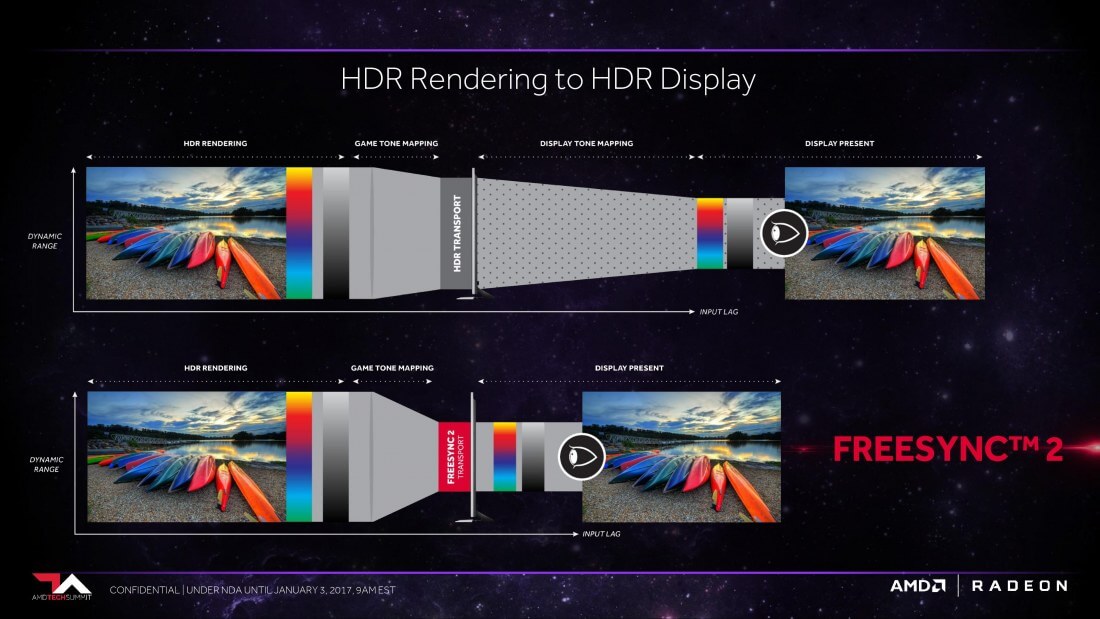
The idea was the games themselves would tone map directly to what the display was capable of presenting, with the FreeSync 2 transport passing the data straight to the monitor without the need for further processing on the monitor itself. This was in contrast to standard HDR tone mapping pipelines that see games tone map to an intermediary format before the display then figures out how to tone map it to its capabilities. Having the games do the bulk of the HDR tone mapping work was supposed to reduce latency, which is an issue with HDR gaming.
That's how AMD detailed FreeSync 2's HDR implementation back at CES 2017. While it sounded nice in theory, one of the key issues raised at the time was that the games themselves had to tone map specifically to FreeSync 2 displays. This meant games would need to integrate a FreeSync 2 API if this HDR implementation was ever to succeed, and we all know how difficult it is to convince a game developer to integrate a niche technology.
As FreeSync 2 stands right now, that original HDR implementation isn't quite ready yet. AMD's website on FreeSync 2 simply lists the technology as including "support for displaying HDR content," and there is no mention anywhere of FreeSync 2 supported games. And when you actually use a FreeSync 2 monitor, HDR support relies entirely on Windows 10's HDR implementation for now, which is improving slowly but isn't at the same level AMD's original solution is set to provide in an ideal environment.
The reason for this is FreeSync 2 support was only introduced in AMD's GPU Services 5.1.1 in September 2017, so game developers have only had the tools to implement FreeSync 2's GPU-side tone mapping for a bit over 7 months now. Getting these sorts of technologies implemented in games can take a long time, and right now there's no word on whether any currently released games have used AGS 5.1.1 in the development process.
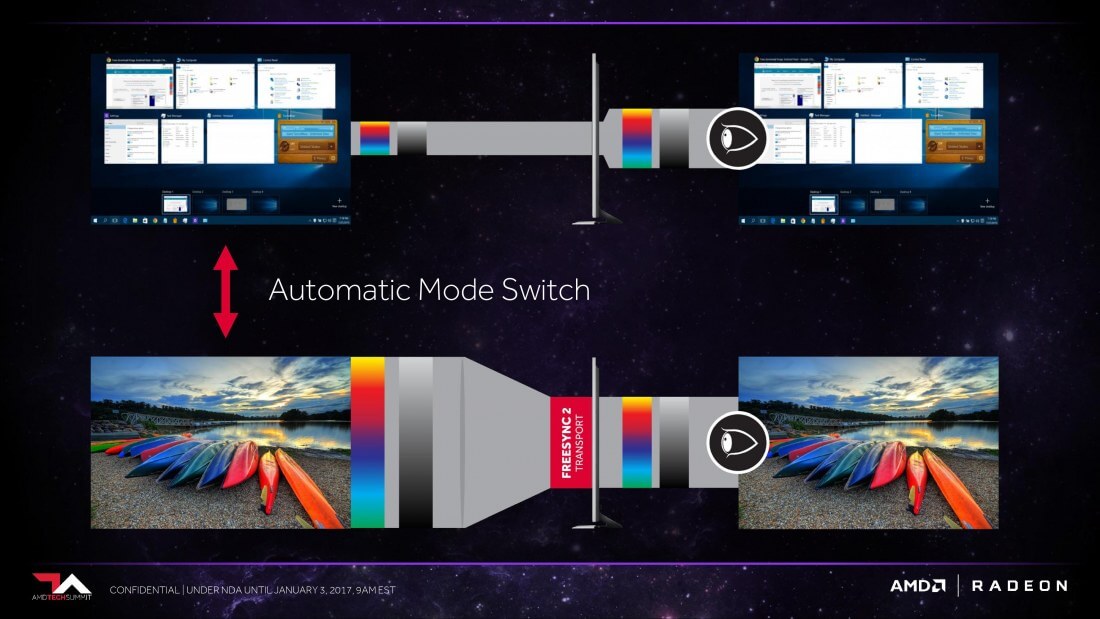
One of the features AMD mentioned as part of their HDR implementation was automatic switching between HDR and SDR modes, so you could game using the full HDR capabilities of your display while returning to a comfortable SDR for desktop apps. Unfortunately this doesn't seem to be functional at the moment either, instead FreeSync 2 once again makes use of Windows' standard HDR implementation that doesn't handle the HDR to SDR transition too well.
However, while the implementation might not be anything special at the moment, FreeSync 2 does guarantee several things relating to HDR. All FreeSync 2 monitors support HDR, so you're guaranteed to get an HDR-capable monitor if it has a FreeSync 2 badge. FreeSync 2 also ensures you can run both adaptive sync and HDR at the same time for an optimal gaming experience. And finally, AMD states that all FreeSync 2 monitors require "twice the perceptual color space of sRGB for better brightness and contrast."
It's unclear exactly what AMD means by "twice the perceptual color space," but the idea is a FreeSync 2 monitor would support a larger-than-sRGB gamut and higher brightness than a basic gaming monitor.
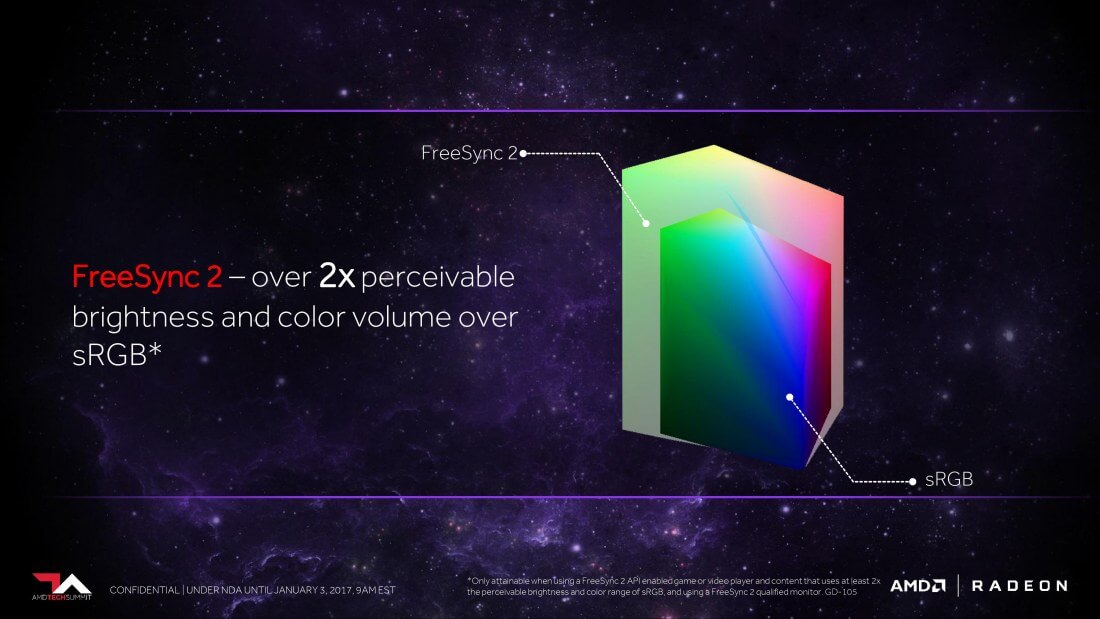
And it does appear that AMD's FreeSync 2 validation process is looking for more than just a basic HDR implementation. So far, every FreeSync 2 monitor that's available or has been announced meets at least the DisplayHDR 400 specification. This is a fairly weak HDR spec but we have seen some non-FreeSync 2 supposedly HDR-capable monitors fail to meet even the DisplayHDR 400 spec, so at least with FreeSync 2 you're getting a display that meets the new minimum industry standard for monitor HDR.
Of course, some monitors will exceed DisplayHDR 400, like the original set of Samsung FreeSync 2 monitors such as the CHG70 and CHG90; both of these displays meet the DisplayHDR 600 spec. Ideally I'd have liked to see FreeSync 2 stipulate a DisplayHDR 600 minimum, but 400 nits of peak brightness from DisplayHDR 400 should be fine for an entry-level HDR experience.
The second main FreeSync 2 feature is reduced input latency, which we briefly touched on earlier. HDR processing pipelines have historically introduced a lot of input lag, particularly on the display side, however FreeSync 2 stipulates low latency processing for both SDR and HDR content. AMD hasn't published a specific metric they are targeting for input latency, however it's safe to say 50 to 100ms of lag like you might get with a standard HDR TV would not be acceptable for a gaming monitor.
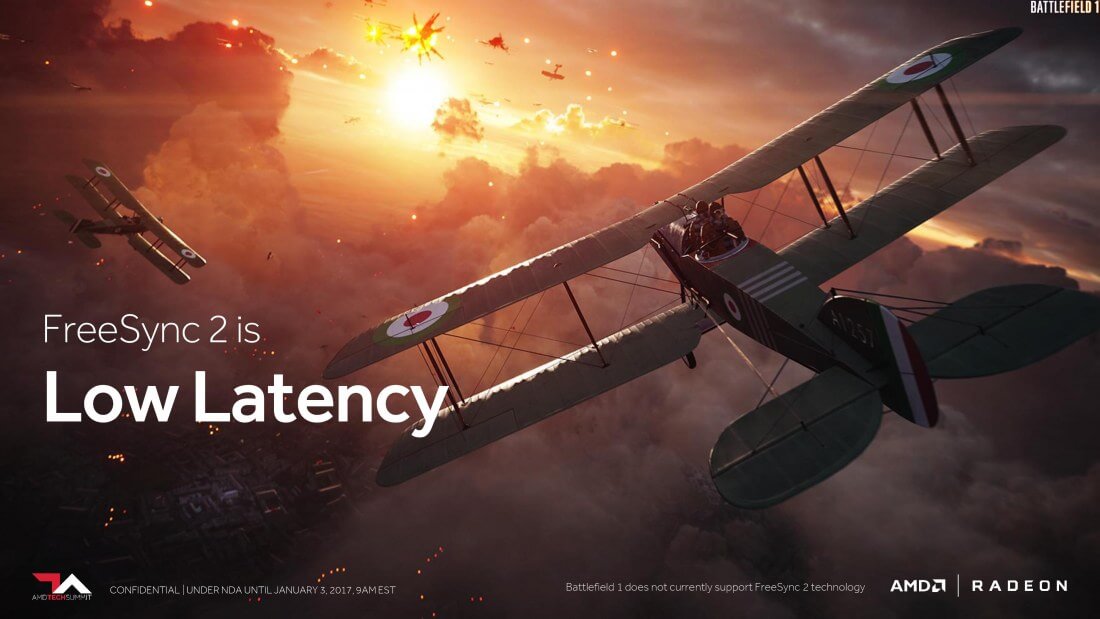
How FreeSync 2 is achieving low latency support in 2018 appears to be more on the display side than the original implementation announced at the start of 2017.
As we mentioned when discussing FreeSync 2's HDR implementation, the original idea was to push all tone mapping into the game engine to cut down on display-side tone mapping, thereby reducing input latency as the display's slow processor wouldn't need to get involved as much. As games haven't started supporting FreeSync 2 yet, today it seems this latency reduction is purely coming from better processing hardware in the display, for example current Samsung FreeSync 2 monitors include a 'low latency' mode that is automatically enabled when FreeSync 2 is enabled.
The final key feature is low framerate compensation. This is a feature that goes hand-in-hand with adaptive sync, ensuring adaptive sync functions at every framerate from 0 FPS up to the maximum refresh rate supported by the display.
There is one simple reason why we need low framerate compensation: displays can only vary their refresh rate within a certain window, for example 48 to 144 Hz. If you wanted to run a game below the minimum supported refresh rate, say at 40 FPS when the minimum refresh is 48 Hz, normally you'd be stuck with standard screen tearing or stuttering issues like you'd get with a fixed refresh monitor. That's because the GPU's render rate is out of sync with the display refresh rate.
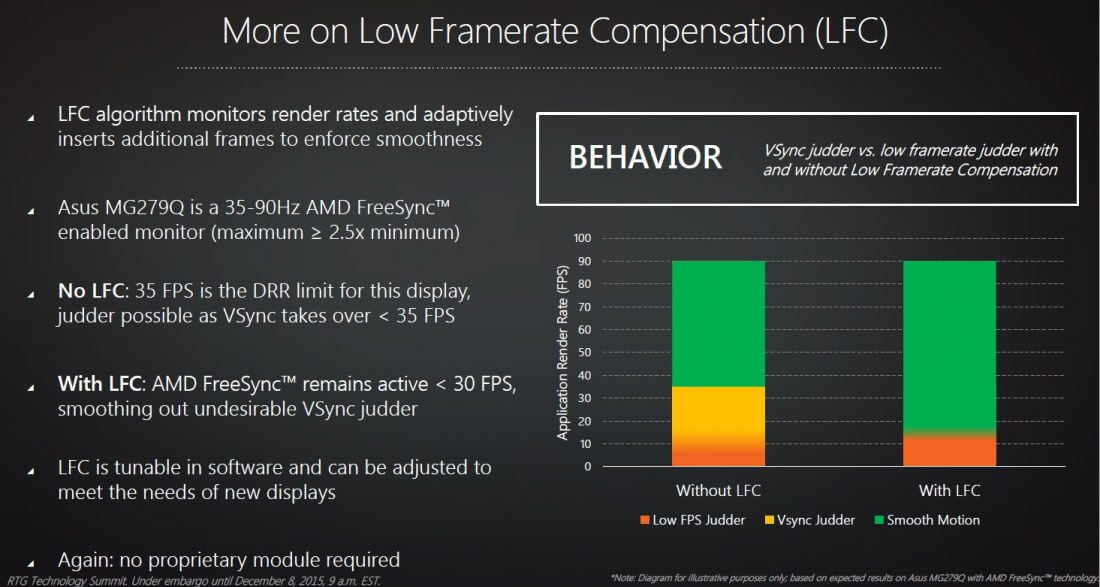
Low framerate compensation, or LFC, extends the window in which you can sync the render rate to the refresh rate using adaptive sync. When the framerate falls below the minimum refresh rate of the monitor, frames are simply displayed multiple times and the display runs at a multiple of the required refresh rate.
In our previous example, to display 40 FPS using LFC, every frame is doubled and then this output is synced to the display running at 80 Hz. You can even run games at, say, 13 FPS and have that synced to a refresh rate; in that case the monitor would run at 52 Hz (to exceed the 48 Hz minimum) and then every frame would be displayed 4 times.
The end result is LFC effectively removes the minimum refresh rate of adaptive sync displays, but for LFC to be supported, the monitor needs to have a maximum refresh rate that is at least double the minimum refresh rate. This is why not all FreeSync monitors support LFC; some come with just 48 to 75 Hz refresh windows, which doesn't meet the criteria for LFC. However in the case of FreeSync 2, every monitor validated for this spec will support LFC so you won't have to worry about the minimum refresh rate of the monitor.
This wouldn't be a look at FreeSync 2 in 2018 without exploring what FreeSync 2 monitors are actually available right now, and what monitors are coming.
Currently there are only three FreeSync 2 monitorson the market, and all are from Samsung's Quantum Dot line-up: the C27HG70 and C32HG70 as 27- and 32-inch 1440p 144Hz monitors respectively, along with the stupidly wide C49HG90, a double-1080p 144Hz monitor. All three are DisplayHDR 600 certified.
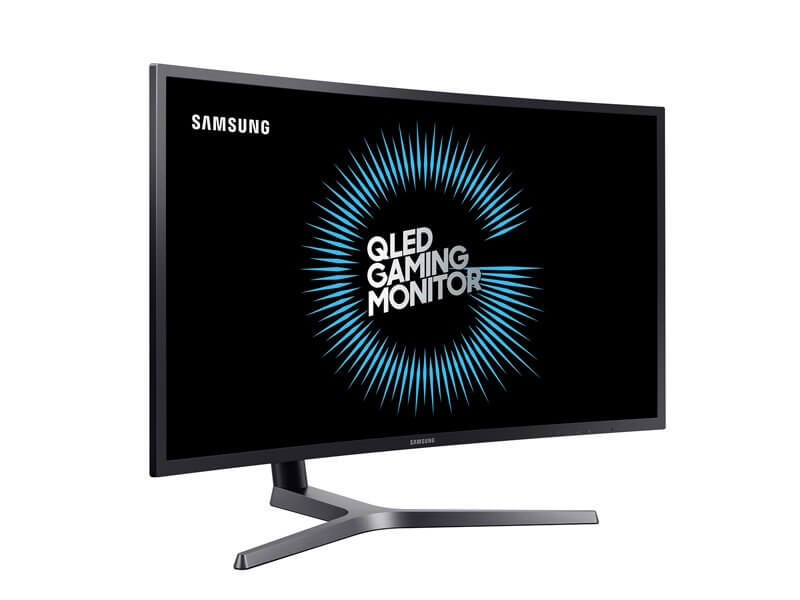
Set for release this year are several other options. We have the BenQ EX3203R, a 32-inch curved VA panel with a 1440p resolution and 144Hz refresh rate, certified for DisplayHDR 400. The AOC Agon AG322QC4 appears to use the same panel, so it has the same specifications. Then there's the Philips 436M6VBPAB (seriously, who named that monitor) which is a 43-inch 4K 60Hz display sporting DisplayHDR 1000 certification.
The last thing I'll mention here is GPU support: FreeSync 2 requires an AMD graphics card as you might expect of an AMD technology, and according to this list, everything from AMD's RX 200 series or newer with the exception of a few products is supported. There are also a bunch of APUs with integrated graphics that work.
If you have an Nvidia GPU, FreeSync 2 monitors will work, and you will get most of the benefits including support for HDR. What you won't get is adaptive sync support; if you want that, you'll need to find a monitor with Nvidia's equivalent G-Sync HDR technology.
Next week we'll follow up with our hands-on impressions on FreeSync 2 monitors, thoughts on using FreeSync and what needs to be improved.
Shopping Shortcuts:
 Best Amazon deal: Get a $5 Amazon credit when you spend $30 on home essentials
Best Amazon deal: Get a $5 Amazon credit when you spend $30 on home essentials
 How to find ethical porn you'll love
How to find ethical porn you'll love
 Literary Communes, Literary Parodies: Happy Monday! by Sadie Stein
Literary Communes, Literary Parodies: Happy Monday! by Sadie Stein
 Flannery O’Connor and the Habit of Art by Kelly Gerald
Flannery O’Connor and the Habit of Art by Kelly Gerald
 SpaceX's Starlink satellite launch in pictures
SpaceX's Starlink satellite launch in pictures
 The celebrity COVID calendar meme is here and it's bleak as hell
The celebrity COVID calendar meme is here and it's bleak as hell
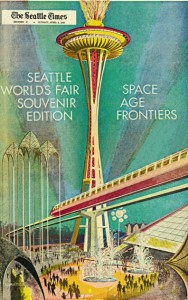 ‘Walden’ the Video Game, Merwin the Movie, Space
‘Walden’ the Video Game, Merwin the Movie, Space
 Things We Love: Vallejo, Factory Records, and ‘The Lonely Doll’ by The Paris Review
Things We Love: Vallejo, Factory Records, and ‘The Lonely Doll’ by The Paris Review
 New MIT report reveals energy costs of AI tools like ChatGPT
New MIT report reveals energy costs of AI tools like ChatGPT
 Wordle today: Here's the answer and hints for May 14
Wordle today: Here's the answer and hints for May 14
 Sony launches new flagship XM6 headphones: Order them now
Sony launches new flagship XM6 headphones: Order them now
 The 1966: Spring’s Smartest Tee by Sadie Stein
The 1966: Spring’s Smartest Tee by Sadie Stein
 Remembering Sendak, Gaining Honors by Sadie Stein
Remembering Sendak, Gaining Honors by Sadie Stein
 Literary Paint Chips: Gallery 1 by Leanne Shapton and Ben Schott
Literary Paint Chips: Gallery 1 by Leanne Shapton and Ben Schott
 The Amazon Book Sale is coming April 23 through 28
The Amazon Book Sale is coming April 23 through 28
 Futures, Fiction, Tigers: Happy Monday! by Sadie Stein
Futures, Fiction, Tigers: Happy Monday! by Sadie Stein
 ‘Walden’ the Video Game, Merwin the Movie, Space
‘Walden’ the Video Game, Merwin the Movie, Space
 ‘Walden’ the Video Game, Merwin the Movie, Space
‘Walden’ the Video Game, Merwin the Movie, Space
 U.N. confirms the ocean is screwed
U.N. confirms the ocean is screwed
 Moon Madness by Sadie Stein
Moon Madness by Sadie Stein
India is getting an undersea bullet trainJohn Cena is helping Nintendo advertise the Nintendo Switch#HurtBae's message for her fellow woman: Know your worthOf course Cate Blanchett joined an Adele performance at a drag show at Stonewall in a pussy hatIKEA releases plans for a spherical garden you can build with tons of plywood and lots of patience'Overwatch' heroes reimagined as 48 original Pokémon, evolutions and allHow to get Uber to recognize sexual harassment in 41 easy stepsFacebook made a version of Snapchat Stories for WhatsApp tooMiserable Kings fans dedicate their subreddit to 'The Lion King' after abysmal tradeAfter company allAlex Trebek proves he has bars with rap lyrics category on 'Jeopardy!'Miserable Kings fans dedicate their subreddit to 'The Lion King' after abysmal tradeNew Han Solo movie details and this awesome first photo are enough to make your heart stop'Overwatch' teases a possible new hero and it's (probably) not DoomfistJ.K. Rowling is a proud dog mom and wants everyone to know itWhy sexual harassment scandals like Uber's are bound to persist in techThe 'Humans of Payatas' features inspiring stories about people living in its slumsKris Jenner stopped by 'The Ellen Show' to discuss her blooming love lifeIt's time to start thinking about what Google will name Android OReese Witherspoon, Mindy Kaling and Oprah Winfrey are having a blast in New Zealand 'Game of Thrones' is the most pirated show for the fifth year in a row You could land in jail for 4 years if caught in possession of demonetized currency notes Multiple cities hold light saber vigils in honour of Carrie Fisher George R.R. Martin mourns Carrie Fisher and wants this 'wretched year' to end Paul Ryan wants to fine people who livestream from the House floor Your Apple Watch will guilt you into working out in the New Year Meet the NBA rookie who shoots free throws 'granny style' 5 customer complaints that escalated hilariously in 2016 What a world without Carrie Fisher means for the Star Wars universe Google thinks this country is showing the most interest in mobile development courses Carrie Fisher once hosted SNL and it was hilarious 7 gifs that remind us 2016 wasn't a total dumpster fire This pilot wants to wish you a Happy New Year 10 challenges of 2016 that taught us teens still rule the world 5 things left unsaid between us and our building's super in 2016 MashReads Podcast: Here are our favorite books of 2016 Google Doodle celebrates the man who invented waterproof 'Mac' raincoats Obama names 2 new national monuments before Trump takes office Carrie Fisher had one hilarious request for her obituary Bowie and Prince to be remembered with huge, streamable NYE fireworks
2.4416s , 10204.3515625 kb
Copyright © 2025 Powered by 【Watch What Every Frenchwoman Wants Online】,Defense Information Network